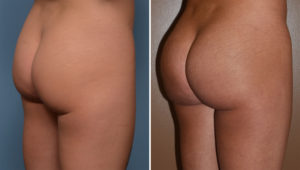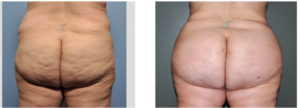While the overall number of plastic surgery procedures continue to slowly rise each year, some procedures have increased more than others. One such procedure is buttock augmentation, up nearly 40% last year. Plumping procedures have always been popular in plastic surgery and the buttocks represents the biggest body part to plump of them all. Whether it is higher, rounder or just smoother, there is a growing number of people who want a better one.

What has led to a dramatic increase in buttock augmentation is two main factors. In an ever increasing multi-cultural society, the buttocks is a greater focus of body aesthetics and shaping. Amongst Black, Latino, gay and transgender people, the size and shape of the buttocks takes on increased emphasis. Add to that the exposure that certain Hollywood stars, such as Kim Kardashian and Jennifer Lopez, have placed on a shapely derriere and the public is sure to follow. The second factor for the procedure increase is the method now most commonly used to do it, fat injections.

While buttock fat injections is an obvious plumping procedure, it has gotten a more commonly known name that is really a misnomer and even a bit misleading. Called the Brazilian Butt Lift and other such lifting names, it is not really a lift at all. It is no more of a lift than one would consider a breast implant as a breast lift. To some degree, there is a mild lifting effect from filling out the skin but it is primarily a volumizing effect.
It is also the one operation where being a little overweight is beneficial providing more donor fat to harvest. There are even some patients who gain weight for the procedure although I do not advocate that approach. At the least, it is not an operation like a tummy tuck or liposuction where you want the patient to have done everything beforehand to be as lean as possible to get the maximum benefit.
For those patients who do not have enough fat, however, buttock implants are the only way to do it. The good news is that buttock implants today are far more advanced with gel-like softness and a large number of sizes and shapes to use. Employing an intra-muscular plane of insertion, results are better and the risk of implant-related complications such as infections and fluid collections much reduced.
Dr. Barry Eppley
Indianapolis, Indiana


